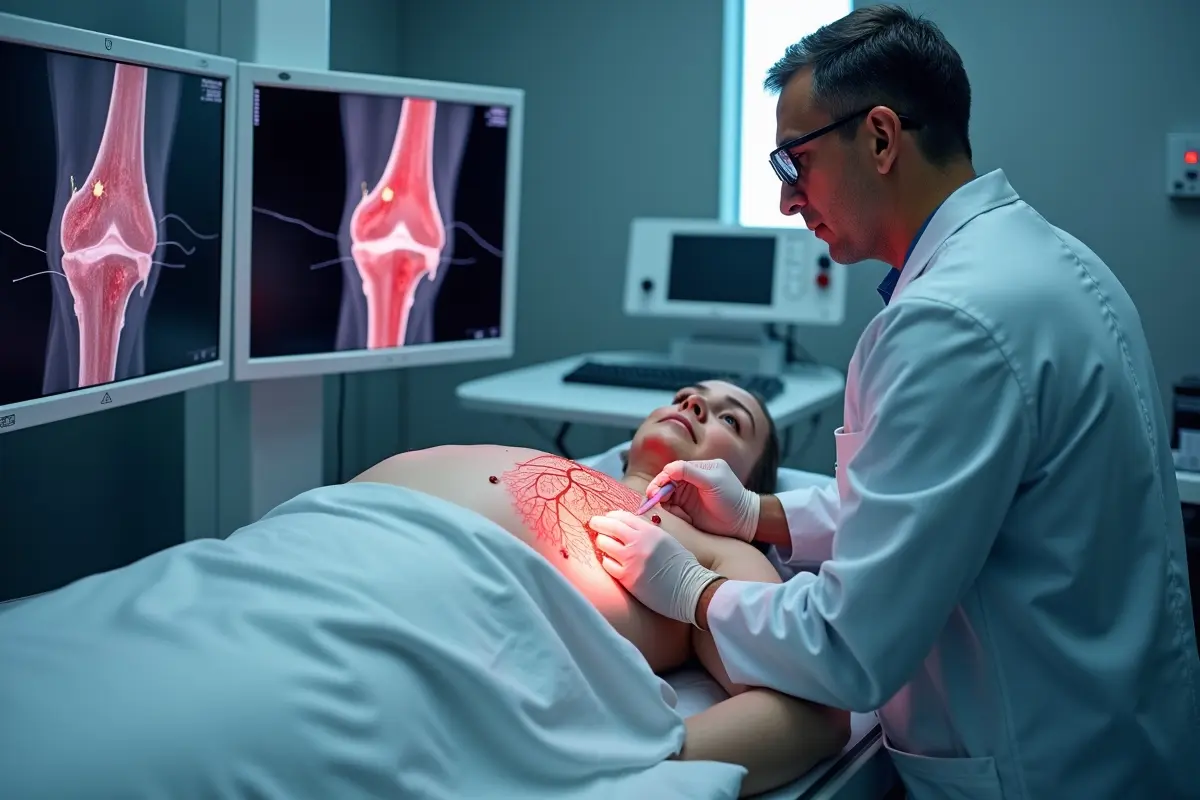What Is GAE and Is It Right for Your Arthritis?
Have you heard of GAE and wondered if it could be the answer to your joint pain?
If you’re living with arthritis, particularly in the knee, you’re likely familiar with the grind of daily discomfort. The stiffness in the morning. The ache after walking. The hesitation before going up stairs. It’s frustrating, it slows you down, and it takes a toll on your quality of life.
Now, a relatively new option is catching attention for its ability to relieve pain without the need for surgery: genicular artery embolization, or GAE.
Contents
First, What Is GAE?
GAE stands for genicular artery embolization. It’s a minimally invasive procedure designed to reduce inflammation and pain in the knee caused by osteoarthritis.
Instead of cutting open the knee or replacing the joint, GAE targets the small blood vessels in the knee that feed inflamed tissue. By slowing down blood flow to these inflamed areas, the body reduces its overactive response, which leads to less swelling, less pain, and better mobility.
This procedure is typically done by an interventional radiologist, using imaging guidance to thread a tiny catheter through your blood vessels. No large incisions. No general anesthesia. Most people go home the same day.
Who Is a Candidate for GAE?
GAE isn’t for everyone, but it could be a great option if:
- You’ve been diagnosed with moderate to severe knee osteoarthritis
- Pain is limiting your daily activities
- You’ve tried other non-surgical options without success (like physical therapy, injections, or medications)
- You’re not quite ready—or eligible—for knee replacement surgery
- You’re looking for a way to delay surgery while still managing pain
This isn’t a last-resort treatment. It’s becoming a strong middle-ground choice, especially for people who want to stay active and independent but are tired of the constant pain.
How Does It Actually Work?
The science behind GAE is surprisingly straightforward. When you have osteoarthritis, the joint becomes inflamed. That inflammation brings in more blood flow, which in turn feeds the cycle of swelling and pain. GAE works by blocking some of those tiny blood vessels (called genicular arteries) that are over-delivering blood to the joint.
This is done by injecting very small particles into the artery, which then reduce blood flow to the inflamed areas without affecting the rest of your leg. Less blood flow means less inflammation. Less inflammation means less pain.
The procedure itself usually takes about 1 to 2 hours. You’re awake, but sedated. Most patients are up and walking shortly after, and recovery is generally quick.
What Are the Benefits?
Let’s be real—no treatment is perfect for everyone. But GAE does come with some pretty compelling upsides.
- Minimally invasive – No large cuts, no hospital stay, and a short recovery time
- Quick relief – Many people notice a significant drop in pain within a few weeks
- Low risk – Fewer complications compared to joint replacement
- Delays surgery – It can be a great way to put off or avoid knee replacement
- Improved quality of life – Reduced pain often means better sleep, more movement, and less reliance on medications
It doesn’t regenerate cartilage or reverse arthritis, but it makes living with arthritis a lot more manageable.
How Long Do the Effects Last?
The pain relief from GAE can last anywhere from several months to a few years, depending on your individual situation.
For some, it’s a long-lasting solution. For others, it becomes part of a larger plan, used alongside physical therapy, weight management, or other treatments.
It’s also not a one-time-only deal. If the benefits wear off over time, the procedure can sometimes be repeated.
Is It Covered by Insurance?
Coverage can vary, and this is something you’ll want to confirm directly with your provider. Some plans do cover GAE, especially if it’s being recommended as part of a larger pain management approach and you’ve tried other options first.
But even if it’s not fully covered, it’s still worth discussing with your doctor. The cost, the recovery time, and the potential benefits often compare favorably to surgery when you lay everything out side by side.
A Smarter Step Forward?
Living with arthritis doesn’t always mean jumping straight to joint replacement. For many people, there’s a better in-between.
GAE offers a fresh option that sits comfortably between painkillers and surgery. It’s not about fixing everything overnight, but about giving you back control over your movement, your comfort, and your daily life.
If you’re struggling with knee pain and feeling stuck between treatments that don’t work and surgery that feels too extreme, this might be the alternative you’ve been hoping for.
Talk to a specialist. Get the facts. It could be the step that changes everything.

